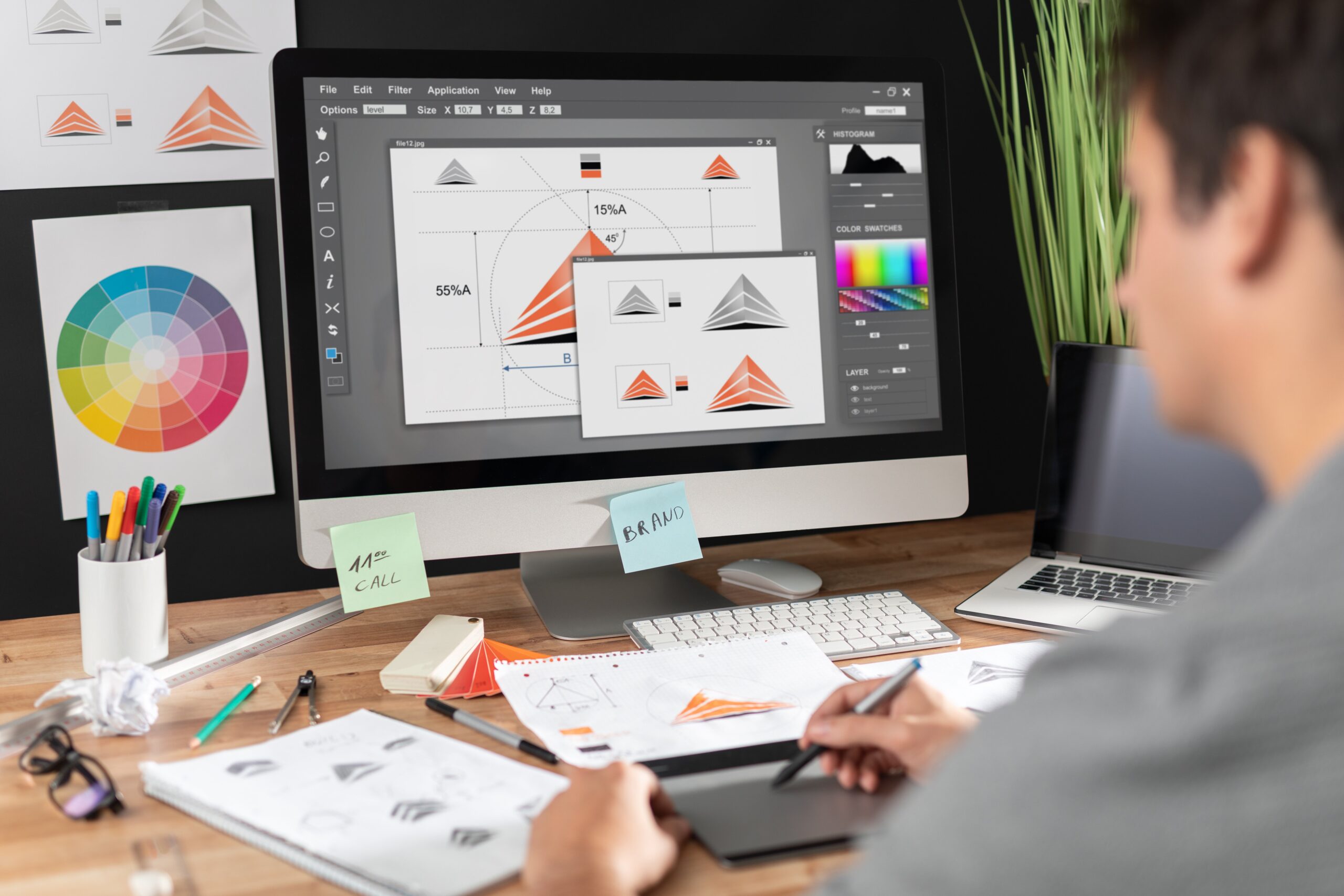Graphic design is a powerful art form that combines creativity, technology, and communication to convey ideas, messages, and emotions visually. Whether it’s a striking logo, an eye-catching poster, or a user-friendly website, graphic design plays a crucial role in shaping how we perceive and interact with the world around us. In this blog post, we will unveil the graphic design process, shedding light on the steps that designers take from the initial concept to the final creation.
Step 1: Understanding the Project and Client
Every graphic design project begins with a thorough understanding of the client’s goals, target audience, and project scope. This initial phase involves communication between the designer and the client to clarify objectives, budget, timelines, and any specific requirements.
- Client Brief: The designer collects information about the project’s purpose, the client’s brand identity, and the message to be conveyed. It’s essential to grasp the client’s vision and expectations.
- Market Research: Understanding the client’s industry, competitors, and target audience is crucial. Research helps designers identify design trends and opportunities to create a unique and effective design.
Step 2: Conceptualization and Brainstorming
Once the project parameters are clear, the designer embarks on the creative journey. This phase involves brainstorming, sketching, and exploring various design concepts and ideas.
- Mood Boards: Designers often create mood boards that compile visual elements, color palettes, typography, and imagery to establish the project’s visual direction and style.
- Sketching: Hand sketches and rough drafts help designers visualize concepts and explore different design approaches before moving to digital tools.
Step 3: Design Development
With a clear concept in mind, the designer transitions to the digital realm. This phase includes creating the actual design using graphic design software such as Adobe Illustrator, Photoshop, or InDesign.
- Layout and Composition: The designer establishes the layout and composition of the design, ensuring that visual elements are organized in a visually appealing and balanced manner.
- Typography: Careful selection of fonts and typography is essential to convey the intended message and enhance readability.
- Color Palette: Designers choose a color palette that aligns with the project’s objectives and evokes the desired emotions. Colors play a significant role in shaping the audience’s perception.
- Imagery: The incorporation of images, illustrations, or icons enhances the design’s visual appeal and reinforces the message.
Step 4: Feedback and Revision
Design is an iterative process, and client feedback is a vital part of refining the design. Designers present their initial concepts to the client, who provides feedback and suggestions for improvement.
- Client Review: The client evaluates the design concepts, offering input on elements they like, dislike, or wish to change.
- Revisions: Based on the feedback received, the designer makes revisions to the design, addressing the client’s concerns and making necessary adjustments.
Step 5: Finalization and Approval
After multiple rounds of feedback and revisions, the design reaches a stage where both the designer and the client are satisfied with the result. The final design is polished and prepared for approval.
- Proofing: The design is carefully proofread for errors in spelling, grammar, and design consistency. Attention to detail is critical to ensure the design’s accuracy.
- Client Approval: Once the final design is ready, the client provides approval for production or publication.
Step 6: Production and Implementation
With the approved design in hand, the project moves to the production and implementation stage. The designer prepares files for various applications, whether it’s printing, digital publication, or web development.
- File Formats: The designer provides the client with the necessary file formats, which may include high-resolution images, vector graphics, or web-ready assets.
- Print Production: If the design is intended for print, the designer collaborates with printers to ensure that the final printed materials match the design specifications.
- Web Development: For web projects, the designer may work closely with web developers to implement the design on the client’s website, ensuring a seamless transition from design to the online platform.
Step 7: Evaluation and Feedback
After the design is in use or has been published, it’s essential to gather feedback and assess its effectiveness in achieving the project’s objectives.
- Client Feedback: The client’s feedback regarding the design’s impact and performance is valuable for future projects and improvements.
- Audience Response: Depending on the project, feedback from the target audience may be collected through surveys, analytics, or user testing to evaluate the design’s effectiveness.
Conclusion
The graphic design process is a journey from concept to creation, driven by creativity, strategy, and collaboration. It’s a dynamic process that adapts to the unique requirements of each project and client. From understanding the project’s goals and audience to conceptualizing ideas, designing, refining, and implementing the final product, graphic designers play a crucial role in bringing visual stories to life.
In today’s visually driven world, graphic design is more critical than ever for businesses, organizations, and individuals looking to communicate effectively and make a lasting impression. Whether it’s branding, advertising, web design, or any other form of visual communication, the graphic design process is a powerful tool that transforms ideas into impactful visuals, leaving a mark on the world of design and storytelling







